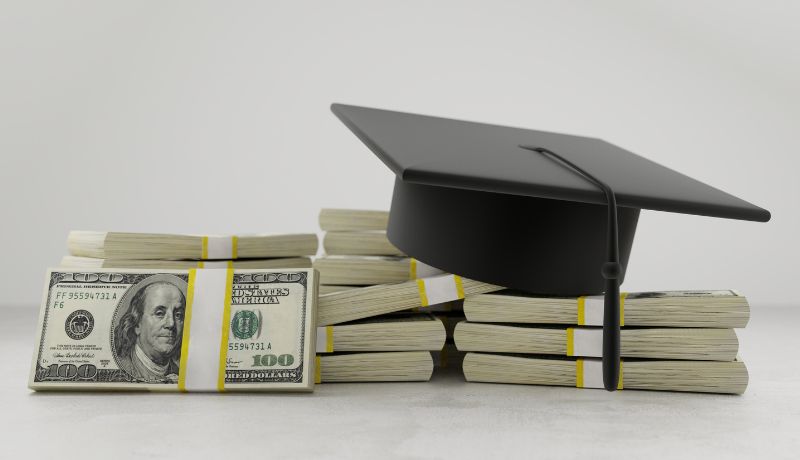The cost of a college education has always had a plus-minus balance sheet attached to it. To improve your career potential, you often need a degree, and earning one frequently means paying costly tuition – something many people struggle with.
For many students, investing in their future comes with the price of student loan debt. But that doesn’t necessarily mean being stuck in debt forever, or that the investment isn’t worth it. It just takes research and understanding your situation to reach a positive and solid decisions in terms of borrowing to pay for college.
Overall, nearly 45 million Americans collectively owed about $1.71 trillion in student loans at the end of 2020, mostly in federal student loans, according to the Federal Reserve. The statistics also show distinct racial disparities in who owes that record level of student loan debt.
Black and Hispanic students tend to take out student loans at higher rates and in larger amounts than their white counterparts, and Black borrowers on average owe the largest amounts and have the highest default rates.
Find the Best Student Loan Refinance Lenders
|
|||||
|
|||||
|
Black college graduates owe an average of $25,000 more in student loan debt than white college grads, according to a July 10, 2021 report by researchers at EducationData.org.
Additionally, more than 67% of Hispanic and Latino student borrowers have educational debt. This ethnic group is the second most likely to borrow private student loans – 69.4% of Hispanic and Latino students borrow $40,000 or more in private student loans – and it is the group most likely to delay getting married and having children because of student loan debt, according to the report.
So how do minorities move past student loan debt and toward better financial shape after school? There are various free resources to help them find scholarships and grants to reduce reliance on loans and to help them pay down student loan debt once they leave college.
For example, the Hispanic Association of Colleges and Universities, also known as HACU, provides Hispanic students with resources to locate scholarships and grants to help them pay for their undergraduate education.
The Thurgood Marshall College Fund has scholarship programs and a special interest in Black students, particularly those at historically Black colleges and universities, also known as HBCUs. The United Negro College Fund, or UNCF, provides more than 10,000 scholarships each year to support minority students while also giving to scholarship funds at 37 HBCUs, according to the organization’s website.
Here are more minority-based scholarship resources:
- Details on 40 Hispanic- and Latino-focused scholarships are available at goingmerry.com, a free financial aid and scholarship platform.
- The Jackie Robinson Foundation offers four-year scholarships worth up to $30,000 over four years through its Mentoring and Leadership Development Program for qualifying minority students pursuing undergraduate degrees.
- The UNCF STEM Scholars Program provides up to $2,500 to $5,000 per academic year, depending on the recipient’s year in college, for qualifying African American students interested in studying science, engineering, technology or math and pursuing a career in a STEM field.
Depending on your profession, there are other opportunities available to ease the burden of student loan debt after college that minorities should be aware of. Here are a few:
Nurse Corps Loan Repayment Program. Although there are many state-based grants available to pay off student loans for nurses, this program is at the national level through the federal Health Resources & Services Administration. It pays off 85% of unpaid nursing education debt for qualified registered nurses, advanced practice registered nurses or nurse faculty who work full time at least two years either in a critical shortage area or at an eligible nursing school.
Indian Health Service Loan Repayment Program. This program will repay up to $40,000 of qualifying student loans for qualifying health clinicians who sign up for two years of service at health facilities in American Indian and Alaska Native communities. By choosing to stay longer, participants can renew their contract annually until their qualified student loan debt is paid. American Indians and Alaska Natives who apply receive priority consideration.
Teacher Loan Forgiveness Program. Applicants approved for this federal program can earn up to $17,500 in forgiveness for federal subsidized and unsubsidized direct loans, including Stafford loans, if they agree to teach for five full and consecutive years in a low-income school or educational service agency. In some cases, outstanding portions of federal or direct consolidation loans may also be eligible for forgiveness.
While not an exhaustive list, these resources are good starting points for minority students looking to reduce the financial barriers to college. With access to funding sources that can minimize student loans, Black, Hispanic and other minority borrowers can make the most of their investment in higher education.


